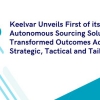Most businesses like to blame failed or protracted negotiations on an inability to reach agreement on the financials, contract terms, legal issues or some other business measure - but after 30 + years of contract negotiations experience, I’ve rarely seen a deal lost on these items. Negotiations are far more likely to falter due to lack of trust, or due to a weak relationship amongst the parties. Glenn Llopis, Forbes contributor, argues that absence of trust, indifference and lack of integrity will destroy your business.
What leads to distrust? Stakeholders carrying different agendas, and attempting to secure personal advantage at every turn. Buyer behaviour driven by short-term bottom line results. Vendor’s desire to close a deal at quarter’s end to meet bonus targets. Third-party advisors adding process time and complexity to enhance their revenue stream. The absence or misalignment of strategic leadership when it is needed to define business objectives and exert control. These are the culprits that destroy trust and sabotage negotiations - causing margins to erode, killing the prospect of new revenue and doing lasting damage to existing and new relationships.
Sound familiar?
Successful completion of large-scale, complex contract negotiations requires juggling components and stakeholders in an iterative fashion while simultaneously putting all the pieces of a puzzle in place. The puzzle is shape-shifting before your eyes as each iteration of a business issue or perhaps introduction of a new executive member to the team completely changes the landscape. Navigating such an environment requires a high degree of trust among all parties. All long-term relationships of any kind are built on this foundation of trust. There are multiple time-tested vehicles to build trust that can be followed on virtually every transaction. I have seen the ones below work well, for starters.
Listen. Jointly discuss your client’s business objectives and how those align with yours. This is the roadmap against which all future decisions are made and where deal issues are tested for relevance. Is there an issue that is not considered critical path to close? How will success be measured by both parties? What are you trying to achieve? Are expectations realistic given resources, time, competing priorities, etc.? The answers to these questions inform your responses and guide tailored positions for your client, allowing them to be understood and deepening the relationship.
Get face-to-face and shake hands. The value of building a relationship on the back of face-to-face encounters is immeasurable and becomes a solid foundation for trust. Understanding context, nuance and body language, using humor to break the ice and engaging on a personal level cannot be done via any electronic means. Seventy-nine percent of Harvard Business Review subscribers globally said that face-to-face encounters are the most effective way to gain and sell new clients and another 89% said that this was essential to sealing the deal. These percentages increase further when dealing with people from different cultures and/or languages.
Don’t lie or over-commit. Always do what you say you are going to do. Never agree to do something that you cannot do. Where possible, make commitments early. As the negotiation unfolds, prove out the integrity of those early commitments real time via product demos or document deliverables, etc. Provide fact-based case study examples from your existing client history where a client put its trust in your firm, you delivered on specific commitments and what the benefits were for that client in terms of ROI, etc. Set up reference visits for your prospective client with existing clients. Do you have a favourable history or strong relationships with the prospective client that can be leveraged to demonstrate trust in this context?
Look for ways to say yes. Accept more responsibility for the results. How can you help your client meet their business objectives via results-based criteria? Instead of looking at the risk profile as a series of events to avoid, look for avenues for risk mitigation. Use historical frequency of occurrence of an event as an avenue to say yes under certain conditions. Measure risk across the entirety of the transaction or portfolio instead of against isolated events. What are the remedies for the other party if you do not stand by or deliver on a commitment? Can you agree to outcome-based remedies or deliverables for your client, e.g., improve client transaction times, productivity improvements or speed to transform, etc.? Put skin in the game and you will further engender trust.
Involve the big guns. Engage executive leadership to enact change, push to close, secure resources and provide message validation. Both parties require executive business leaders that carry the necessary experience and authority to force action within their respective organisations. Can they muscle resources when/where required on a moment’s notice, change deal priorities on the fly, make P&L decisions in real time, force organisational change when different functions within their organisation do not want to do the deal? When your organisation has someone that can provide this leadership you will take pressure off your client and help to remove barriers to gaining trust.
These simple rules have been used successfully across multiple geographies, different industry vertical sectors, businesses and service lines. In the age of automation and AI, trust becomes increasingly important. By way of example, these techniques worked extremely well with an existing client who had decided to competitively bid a large body of work near the end of the original contract term. The deal was highly competitive and the client was looking for dramatic cost savings as well as transformational initiatives without the ability to utilise traditional cost reduction levers, etc. The size of the transaction garnered Board-level involvement and careers hung in the balance. There were numerous contentious areas on the table discussed across many months of negotiations and this successful negotiation was only achieved through leveraging the strength of the relationship and the trust built during negotiations using these principles above.








